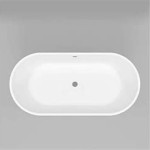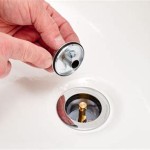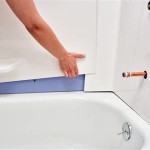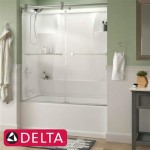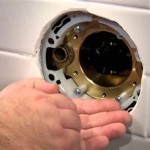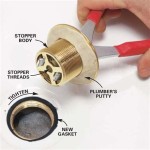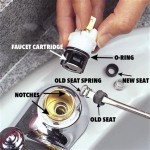Are Bathtub Drains Standard Size? Understanding Bathtub Drain Dimensions and Compatibility
The question of whether bathtub drains are a standard size is a common one, particularly for homeowners undertaking plumbing repairs or renovations. While there is a degree of standardization, the reality is more nuanced. Understanding the typical dimensions, components, and variations in bathtub drains is crucial for selecting the correct replacement parts and ensuring a leak-proof installation. This article explores the standards, variations, and factors influencing bathtub drain size and compatibility.
Bathtub drains are essential components of a plumbing system, responsible for efficiently draining water from the tub while preventing sewer gases from entering the home. They typically consist of several parts, including the drain flange (the visible piece inside the tub), the drain shoe (the section underneath the tub that connects to the drainpipe), the overflow tube (which prevents overflowing), and the stopper mechanism. The interaction and dimensions of these parts are what determine the overall compatibility and functionality of the drain system.
Key Point 1: Common Bathtub Drain Sizes and Thread Standards
While there isn't a single, universally mandated "standard" size for all bathtub drains, certain dimensions and thread types are widely prevalent. Understanding these common measurements is fundamental to navigating bathtub drain replacements and repairs.
The most common drain opening size in bathtubs is 1 1/2 inches (3.81 cm). This measurement refers to the diameter of the drain opening inside the tub itself. This dimension dictates the size of the drain flange, which is the visible, often chrome-plated, component that sits flush against the tub surface. When replacing a drain flange, this 1 1/2-inch measurement is typically the first specification to consider.
The drainpipe connecting to the drain shoe beneath the bathtub also typically measures 1 1/2 inches in diameter. This measurement, however, often refers to the inside diameter (ID) of the pipe. The outside diameter (OD) might be slightly larger to accommodate the pipe wall thickness. It's crucial to verify the OD of the existing pipe when connecting to new plumbing to ensure a proper fit.
Another critical aspect of bathtub drain standardization lies in the thread specifications. Most bathtub drains utilize a standard pipe thread, specifically National Pipe Thread (NPT). The 1 1/2-inch drainpipe commonly uses 1 1/2-inch NPT threads. NPT threads are tapered, providing a secure and leak-resistant seal when properly tightened. However, variations in thread pitch (the distance between threads) and thread angle can exist, especially in older plumbing systems or those manufactured outside of certain regions. Therefore, carefully matching the thread type of replacement parts is essential. Using thread seal tape (Teflon tape) or pipe dope is generally recommended to ensure a watertight seal, regardless of perceived thread compatibility. Always follow the manufacturer’s instructions for the specific sealant being used.
While 1 1/2 inches is the most common size, other sizes do exist, although they are less frequent. Some older bathtubs or specialized designs might utilize different drain sizes, such as 1 3/8 inches or even 2 inches. In such cases, identifying the correct drain size requires careful measurement of the existing drain opening and connected plumbing. Documentation for the bathtub or consultation with a plumbing professional may be necessary to ascertain the specific drain size.
The length of the drain assembly, which encompasses the distance from the drain flange to the point where it connects to the main drain line, also varies. This length is influenced by the bathtub's design, its distance from the floor, and the configuration of the underlying plumbing. There is no standardized length, making it essential to accurately measure the existing drain assembly when replacing it. Adjustable drain assemblies are available, offering flexibility in accommodating different length requirements.
Key Point 2: Variations in Bathtub Drain Types and Mechanisms
The type of bathtub drain mechanism significantly impacts its dimensions and compatibility. Different stopper mechanisms require different internal components and configurations, affecting the ease of replacement and potential for interchangeability.
Several common types of bathtub drain stoppers exist: pop-up, lift-and-turn, toe-touch, and trip-lever. Each type operates differently and has its own unique set of parts.
Pop-up drains utilize a spring-loaded stopper that is activated by a lever mechanism. The lever, often located near the overflow plate, pushes a rod that raises and lowers the stopper. The stopper itself has a specific size and shape to fit the drain opening. Pop-up drains often require a specific type of drain shoe with a corresponding lever mechanism. Replacing the stopper alone usually requires identifying the exact model or manufacturer to ensure compatibility.
Lift-and-turn drains feature a stopper that is manually lifted and turned to open and close the drain. The stopper typically has a rubber O-ring to create a watertight seal. The threads on the stopper's shaft must match the threads in the drain flange for proper operation. Replacement stoppers are usually available in standard sizes, but verifying thread compatibility is crucial.
Toe-touch drains operate with a simple push-and-release mechanism. Pressing the stopper with one's toe seals the drain, and pressing it again releases it. Toe-touch drains often have internal springs and seals that can wear out over time. Replacement stoppers are generally available, but ensuring the correct size and thread type is crucial for a proper seal.
Trip-lever drains connect the stopper to a lever located near the overflow plate via a linkage. Activating the lever raises or lowers the stopper. Trip-lever drains are more complex than other types and require careful adjustment to ensure proper sealing. Replacing the entire drain assembly is often necessary if the linkage or stopper becomes damaged. Adjustments to the linkage can often resolve minor issues.
The overflow tube, connected to the drain shoe, also plays a role in drain functionality. The overflow tube prevents water from overflowing the bathtub. It typically has a standard diameter, but the length of the tube and the design of the overflow plate can vary. Replacing the overflow tube requires matching the diameter, length, and style of the existing tube.
Key Point 3: Factors Influencing Bathtub Drain Compatibility
Even when dealing with seemingly standard drain sizes, several factors can influence the compatibility of replacement parts. Considering these factors before purchasing replacement components can prevent installation headaches and ensure a proper, leak-free seal.
The age of the plumbing system is a significant factor. Older homes may have plumbing systems that deviate from current standards. The drainpipes might be made of different materials (e.g., cast iron instead of PVC) or have non-standard thread types or sizes. Attempting to connect new drain components to older plumbing without proper adapters or modifications can lead to leaks and other problems. Consulting a plumber can be helpful in assessing the compatibility of new and old plumbing materials.
The material of the bathtub also influences drain compatibility. Different bathtub materials, such as acrylic, fiberglass, or cast iron, have varying thicknesses and contours around the drain opening. The drain flange must be designed to properly seal against the bathtub surface without damaging the tub. For instance, overtightening a drain flange on an acrylic tub can cause cracking or damage.
Manufacturing tolerances, even within standard sizes, can lead to compatibility issues. Slight variations in thread pitch, diameter, or stopper dimensions can prevent a proper fit. Always inspect replacement parts closely and compare them to the existing components before attempting installation. Using thread sealant can help compensate for minor discrepancies, but significant mismatches should be avoided.
The type of sealant used can also affect drain compatibility and leak prevention. Thread seal tape (Teflon tape) is commonly used on threaded connections to create a watertight seal. Pipe dope, a thicker sealant, is another option. The choice of sealant depends on the materials being joined and the specific application. Always follow the sealant manufacturer's instructions for proper application.
Finally, consider the overall quality of the replacement parts. Inexpensive or poorly manufactured drain components may have dimensional inaccuracies or be made of inferior materials, increasing the risk of leaks and premature failure. Investing in high-quality replacement parts from reputable manufacturers can save time and money in the long run.
In summary, while a 1 1/2-inch drain opening and NPT threads are commonly found in bathtubs, the term "standard size" doesn't fully capture the variations in drain types, mechanisms, and factors affecting compatibility. Careful measurement, attention to detail, and consideration of the existing plumbing system are crucial when replacing bathtub drain components. When in doubt, consulting a qualified plumber is always recommended.

Deluxe Bathtub Drains Brass Construction Available In Designer Finishes

How To Size A Tub Drain

Deluxe Bathtub Drains Brass Construction Available In Designer Finishes

Deluxe Bathtub Drains Brass Construction Available In Designer Finishes

Exposed Drains For Vintage Clawfoot Bathtubs

Universal Tubs Hd Series 60 In Left Drain Step Walk Soaking Bath Tub With Low Entry Threshold White Hdsi3060lws The Home Depot

Keeney 1 2 In Brushed Nickel White Roller Ball Drain With Plastic Pipe The Bathtub Drains Department At Com

American Standard Solid Color Foot Lock Drain With Plastic Pipe In The Bathtub Drains Department At Com

Keeney 630pvc Foot Lok Stop Bathtub Drain Kit 1 2 Inch Fits All Standard Size

American Standard Solid Color Foot Lock Drain With Brass Pipe In The Bathtub Drains Department At Com
Related Posts


